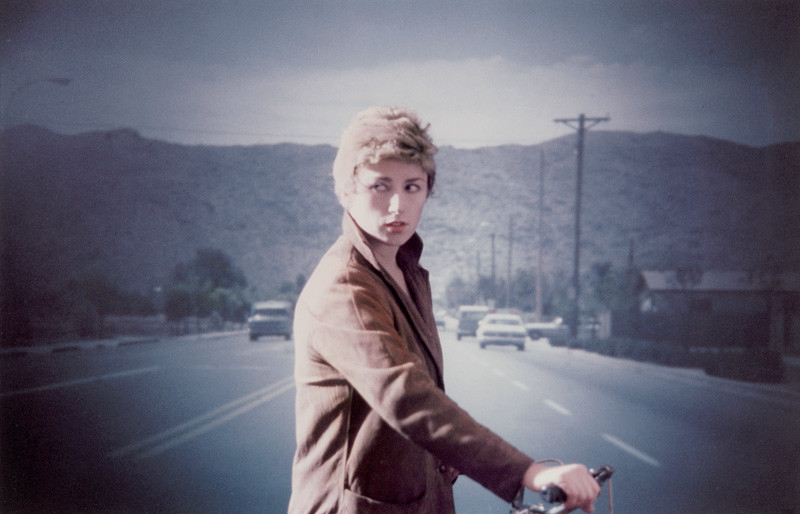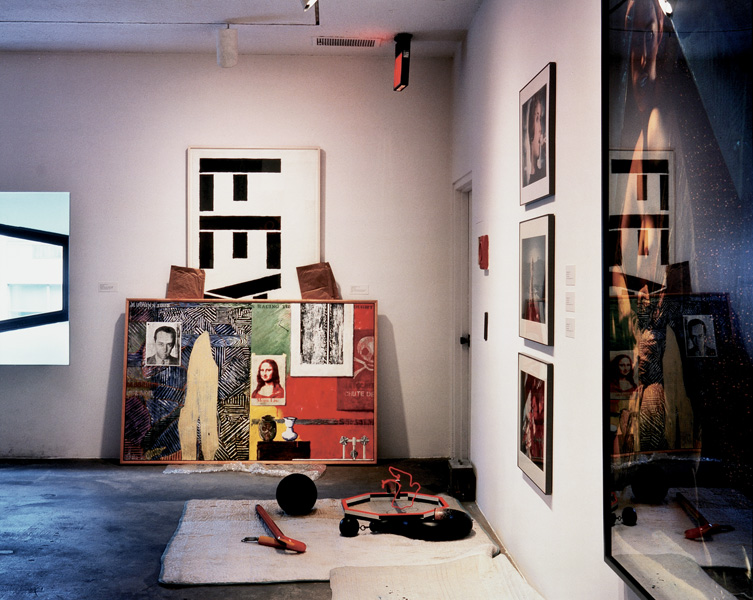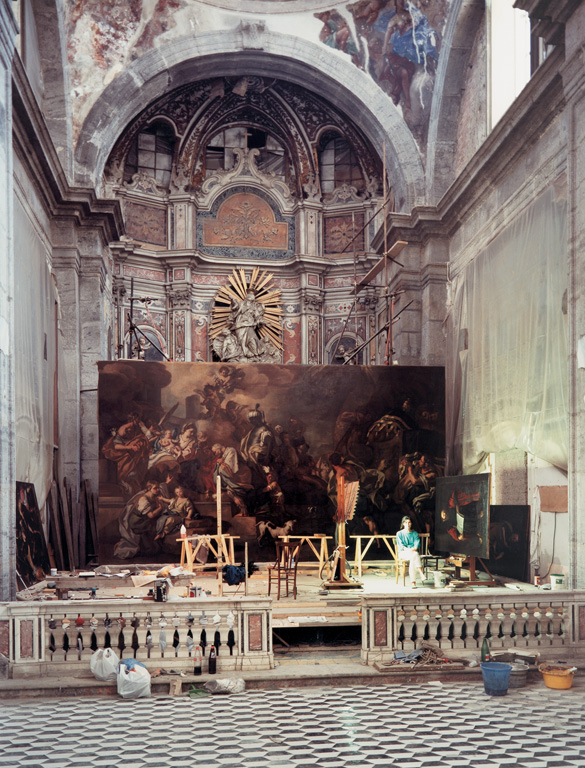[Winter 2003]
Vancouver Art Gallery
15 March–1 September 2003
Curated by Bruce Grenville and Melanie O’Brian
“With the recent acquisition of more than sixty works by sixteen internationally acclaimed artists, the Vancouver Art Gallery now holds one of the most comprehensive contemporary photo-based art collections in North America.” So begins the curatorial apologia for the Vancouver Art Gallery exhibition The Big Picture, which juxtaposes works from the Schwartz acquisition with thematically kindred pieces from the VAG collection, thereby testifying – at least in the VAG curators’ eyes – to the expanded collection’s scale and aesthetic ambition.
A collection of contemporary international photography of this scale is welcome in Vancouver. In the 1980s, under the tenure of director Willard Holmes, the gallery was able to acquire major works by some of the city’s best-known photographers, including Jeff Wall, Ken Lum, Rodney Graham, and Ian Wallace. Though the gallery is unique among Canadian public galleries in possessing an endowment fund that permits it to regularly purchase contemporary artworks, the VAG has lacked an international photography collection that would allow its curators to contextualize its holdings of work by the so-called Vancouver school. And much first-rate contemporary photography trades at values far in excess of what the VAG would be able to realistically acquire without compromising its many other acquisition goals. Thus, the institution’s curators properly view the Schwartz collection as something of a coup. The collection does contain major works by artists such as Thomas Struth, Dan Graham, and Bernd and Hilla Becher, all of which are useful in providing an “instant context” for the VAG’s collection of works by artists such as Wall, Lum, Wallace, Stan Douglas, Roy Arden, and Liz Magor. But the curators’ claim that, by extension, the VAG “now holds one of the most comprehensive contemporary photo-based art collections in North America” is deeply problematic. The Schwartz collection contains some surprising omissions. There are, for example, no instances of the American realist, new topographic, and new color works that are key to contextualizing the VAG’s holdings. There are no works by Robert Adams, William Eggleston, Lewis Baltz, Ed Ruscha, Stephen Shore, or Christopher Williams, to name just a few. This is not the fault of the collectors – collectors being under no obligation, as art institutions are, to assemble collections that are truly comprehensive – but it does put the VAG curators in the curious position of presenting the Schwartz collection as historically comprehensive, when in fact it is anything but. A truly comprehensive photography collection that would properly contextualize the VAG’s present holdings would have to include works by all the artists whom the Schwartz collection lacks, in addition to historical works by photographers such as Atget, Wols, Henry Peach Robinson, Ralph Steiner, Walker Evans, Diane Arbus, and many others. It would be an ambitious, and probably maddeningly impossible, goal.
Many other problems permeate every aspect of the current exhibition, from its curatorial thesis, through the selection of works on display, to the language the curators use to frame and defend their aesthetic judgments. By invoking the concept of the tableau (Western culture’s quintessential “big picture”) and its relationship to contemporary photography, curators Grenville and O’Brian allude to the influential work of French curator Jean-Francois Chevrier on photographers such as Walker Evans, Dan Graham, Jeff Wall, and Thomas Struth. Chevrier finds in the form of the tableau, or autonomous picture (a form inseparable from the larger development of Western figurative art), a bridge between historical pictorial traditions and advanced photography, a point of connection that, for any number of reasons connected to modern photography’s painful entry into full reflexively critical (“modernist”) consciousness, many recent photographers have been at pains to elide or disavow. Photography, specifically documentary and amateur photography, held a special attraction for artists such as Dan Graham, Ed Ruscha, and John Baldessari – namely, the sense that photography did not seem to have, or was capable of being conceived of as not having, the long train of cultural and historical baggage that was thought, in the 1960s and early 1970s, to have encrusted more “traditional” mediums such as painting and sculpture. The grace and economy of Chevrier’s thinking lies in its revelation that a landscape photograph by, say, Thomas Struth can be described in much the same critical language as can a landscape print by Corot or Rembrandt. The intent of this operation is not to equate the two in terms of aesthetic quality, but rather to indicate that such trans-historical comparisons convincingly demonstrate that the twentieth-century avant-garde’s language of rupture and “the epistemological break” was, though necessary in its time, overblown and ultimately inaccurate. In place of the language of break and rupture, then, a more subtle analysis of call and response through time, a cool attentiveness to the way artistic forms such as the tableau shift and change in time like living things.
None of the cool incision of Chevrier’s thought is apparent in The Big Picture. Instead, the exhibition curators engage in much loose windy talk about thematic aspects of the Schwartz collection. “The photographic works in this collection identify and document the truths and mythologies of contemporary culture. The camera’s lens is focused on various subjects – the individual, society and the landscape – to produce photographs that are both coolly analytical and emotionally compelling in their constructed objectivity and precision.” These are banal half-truths. The specificity of each work – say, the characteristics distinguishing a photograph by Louise Lawler from one by Cindy Sherman – is elided in favor of nebulous concepts such as “the truths and mythologies of contemporary culture,” a theme with which, so far as I can tell, most living artists are involved almost by definition.
The curators’ unwillingness to frame their discussions of the works on display in more specific terms means that many of the non-photographic objects end up looking lost. Rachel Whiteread’s plastic and plaster casts and patinated bronzes, and Jenny Holzer’s enamel plaques are not really photographs, yet the VAG curators make no real effort to show how Whiteread’s casts or Holzer’s signs perform similar conceptual work to (to pick two examples from a much wider field of possibilities) Walker Evans’s pictures of signs, or Jeff Wall’s little-known baggage-carousel sculpture in the Netherlands, which its creator has described in interviews as a kind of three-dimensional photograph.
A second, related problem is that The Big Picture puts every work from the Schwartz acquisition on display. Despite the video of Alan Schwartz discussing his collection that plays, incessantly, in the “public programming” room on the exhibition floor, and the VAG’s breathless promotion of the collection’s breadth and quality, the Schwartz collection is, at best, an aesthetically mixed bag, a problem that can be seen most clearly by examining the work of two artists represented in depth in the collection, Andreas Gursky and Cindy Sherman.
Gursky’s earliest works, such as his Sonntagsspazierganger, Ratingen (1984), are modest in scale, describing small moments in the life of a community that typically escape representation. A crowd has gathered at the edge of a public forest, some with bicycles, and they hesitate before proceeding past a barrier down a paved road into the woods. Gursky’s later, larger works begin to emphasize formal aspects of the photograph as object and simplistic thematic oppositions over the ambiguous, therefore resonant, meanings that flicker like lightning in his earliest pictures.
A more recent photograph, such as Happy Valley, Hong Kong (1994), is visually striking because of the way in which Gursky’s transmounting of the print onto Plexiglas accentuates the image’s amorphous, milky light, but the picture’s simplistic opposition of the graves in the old cemetery in the foreground with the encroaching towers of monopoly capitalism in the background is, ultimately, thin and unsatisfying. The picture, for all technical finish and atmospheric effects, is an image that seems critical, but that traffics in clichés.
Similarly, the early Cindy Sherman photographs in the Schwartz collection, such as Untitled #60 (1980), in which a coy-looking Sherman crosses a seemingly rear-projected southern California highway, are among the artist’s most striking. The pictures emulate a whole range of movie genres while never settling on a particular image. Sherman’s command of the look of American cinema gives her project considerable strength, as does her ability to seamlessly blur details taken from particular movies into a diffuse stylistic haze that resists being pinned down to any specific title, date, or genre. Similarly, the ambiguity of Sherman’s own gestures and, in particular, her coy half-recognition of the viewers beyond her portraits’ borders invests the pictures with considerable aesthetic effect. Sherman’s more recent works are, by and large, forced and unconvincing, a recognition that the VAG curators seem to have acknowledged by hiding a recent, and profoundly vacuous, Sherman photograph (a toy doll of indeterminate gender seen in close-up, with grass clippings glued to its brawny, hyper-masculine legs) off in a far corner of the gallery.
There are a few bright spots in the exhibition worth mention. The Schwartz collection of Louise Lawler’s work is well chosen and works even better as an ensemble; I share the collectors’ conviction that Lawler is a major artist whose tart, funny work has never really received its full critical due. The show layout is sensitive and convincing; the works from the collection flow, more or less seamlessly, along beside each other. Some of the curators’ decisions, such as their arrangement of a group of Bernd and Hilla Becher’s photographs of water towers within a few feet of a group of Lothar Baumgarten photographs of metal railway bridges, or their playing off a group of vintage 1960s architectural studies by Dan Graham against a more recent series of architectural photographs by Thomas Ruff, are inspired. The Becher/Baumgarten pairing works by stressing the unexpectedly lyrical quality of the bridges’ architecture, and simultaneously highlights the archaeological methodologies underlying both artists’ practices. The Graham/Ruff pairing works by demonstrating how closely Ruff must have studied Graham’s late-1960s output, and also stresses the comical quality of what are all too often seen as humourless, “objective” depictions of admittedly ugly houses. At these moments, the exhibition’s earnest didacticism relents, and something like real jouissance – aesthetic pleasure, if you will – takes over. These intervals are profoundly moving, because they prove that the exhibition’s curators are moved by the works that they are presenting when they step outside their official roles as the objects’ institutional apologists and guardians.
Finally, two photographs are masterworks in every sense of the word. In Thomas Struth’s Landscape No. 25, Winterthur (Baumgruppe Bei Rutshcwil) (1993), not much is going on. A gravel path leads down past a copse of dark winter trees to a field, light lime-green under what looks from a distance to be frost. It is sunset; the sky beyond the trees is full of delicate pastel shades, all violets and purples. You sense that the colours in the sky and landscape are only briefly present; another second, and it will be full twilight. Struth’s picture is a portrait of things changing, a glimpse of a moment at which each element of this silent, otherwise nondescript landscape is in equilibrium with each other element. It is one of the most powerful modern landscapes I know.
Jeff Wall’s Coastal Motifs is also a portrait of a landscape in equilibrium, but one that, unlike Struth’s, is fully peopled. Wall’s illuminated transparency depicts a view north from a Vancouver suburb, taking in a local bridge’s off-ramp, the chemical plants and barge loading docks at an ocean inlet’s edge, and behind them, the North Shore mountains, dotted here and there with condominiums and logging scars, their dull green shoulders mounting up to a hazy blue spring sky full of clouds. Coastal Motifs is a portrait of another kind of environmental equilibrium, one that is busier than Struth’s, but no less moving. The vantage point the picture is taken from is just far enough back to reveal that no social function exists in a vacuum, isolated and alone, but rather that things are happening all over, and all at once, so quickly that the people who live inside the landscape must scarcely be conscious of all the lives that they live in such close proximity to. Struth’s and Wall’s photographs are “big pictures” par excellence, fulfilling the promise of this ambitious, maddeningly inconsistent exhibition.



